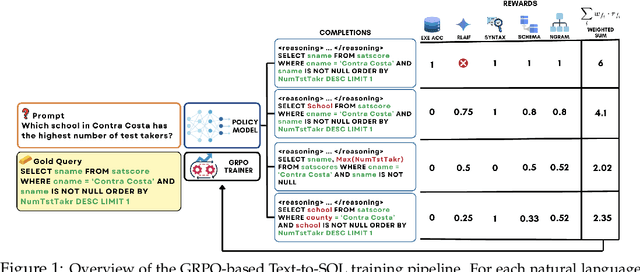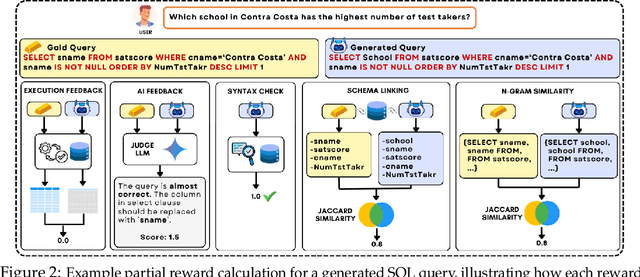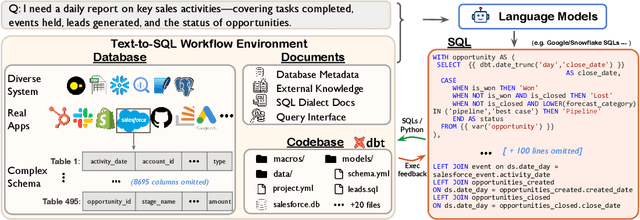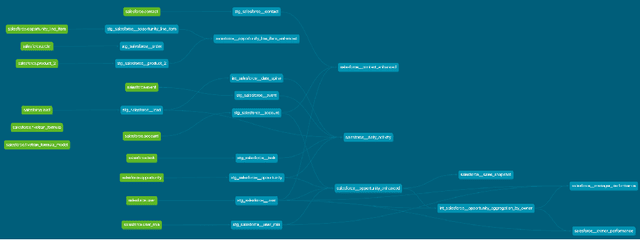Ruoxi Sun
Keep the Lights On, Keep the Lengths in Check: Plug-In Adversarial Detection for Time-Series LLMs in Energy Forecasting
Dec 13, 2025Abstract:Accurate time-series forecasting is increasingly critical for planning and operations in low-carbon power systems. Emerging time-series large language models (TS-LLMs) now deliver this capability at scale, requiring no task-specific retraining, and are quickly becoming essential components within the Internet-of-Energy (IoE) ecosystem. However, their real-world deployment is complicated by a critical vulnerability: adversarial examples (AEs). Detecting these AEs is challenging because (i) adversarial perturbations are optimized across the entire input sequence and exploit global temporal dependencies, which renders local detection methods ineffective, and (ii) unlike traditional forecasting models with fixed input dimensions, TS-LLMs accept sequences of variable length, increasing variability that complicates detection. To address these challenges, we propose a plug-in detection framework that capitalizes on the TS-LLM's own variable-length input capability. Our method uses sampling-induced divergence as a detection signal. Given an input sequence, we generate multiple shortened variants and detect AEs by measuring the consistency of their forecasts: Benign sequences tend to produce stable predictions under sampling, whereas adversarial sequences show low forecast similarity, because perturbations optimized for a full-length sequence do not transfer reliably to shorter, differently-structured subsamples. We evaluate our approach on three representative TS-LLMs (TimeGPT, TimesFM, and TimeLLM) across three energy datasets: ETTh2 (Electricity Transformer Temperature), NI (Hourly Energy Consumption), and Consumption (Hourly Electricity Consumption and Production). Empirical results confirm strong and robust detection performance across both black-box and white-box attack scenarios, highlighting its practicality as a reliable safeguard for TS-LLM forecasting in real-world energy systems.
VISTAR:A User-Centric and Role-Driven Benchmark for Text-to-Image Evaluation
Aug 08, 2025Abstract:We present VISTAR, a user-centric, multi-dimensional benchmark for text-to-image (T2I) evaluation that addresses the limitations of existing metrics. VISTAR introduces a two-tier hybrid paradigm: it employs deterministic, scriptable metrics for physically quantifiable attributes (e.g., text rendering, lighting) and a novel Hierarchical Weighted P/N Questioning (HWPQ) scheme that uses constrained vision-language models to assess abstract semantics (e.g., style fusion, cultural fidelity). Grounded in a Delphi study with 120 experts, we defined seven user roles and nine evaluation angles to construct the benchmark, which comprises 2,845 prompts validated by over 15,000 human pairwise comparisons. Our metrics achieve high human alignment (>75%), with the HWPQ scheme reaching 85.9% accuracy on abstract semantics, significantly outperforming VQA baselines. Comprehensive evaluation of state-of-the-art models reveals no universal champion, as role-weighted scores reorder rankings and provide actionable guidance for domain-specific deployment. All resources are publicly released to foster reproducible T2I assessment.
What's Pulling the Strings? Evaluating Integrity and Attribution in AI Training and Inference through Concept Shift
Apr 28, 2025Abstract:The growing adoption of artificial intelligence (AI) has amplified concerns about trustworthiness, including integrity, privacy, robustness, and bias. To assess and attribute these threats, we propose ConceptLens, a generic framework that leverages pre-trained multimodal models to identify the root causes of integrity threats by analyzing Concept Shift in probing samples. ConceptLens demonstrates strong detection performance for vanilla data poisoning attacks and uncovers vulnerabilities to bias injection, such as the generation of covert advertisements through malicious concept shifts. It identifies privacy risks in unaltered but high-risk samples, filters them before training, and provides insights into model weaknesses arising from incomplete or imbalanced training data. Additionally, at the model level, it attributes concepts that the target model is overly dependent on, identifies misleading concepts, and explains how disrupting key concepts negatively impacts the model. Furthermore, it uncovers sociological biases in generative content, revealing disparities across sociological contexts. Strikingly, ConceptLens reveals how safe training and inference data can be unintentionally and easily exploited, potentially undermining safety alignment. Our study informs actionable insights to breed trust in AI systems, thereby speeding adoption and driving greater innovation.
Review, Refine, Repeat: Understanding Iterative Decoding of AI Agents with Dynamic Evaluation and Selection
Apr 02, 2025Abstract:While AI agents have shown remarkable performance at various tasks, they still struggle with complex multi-modal applications, structured generation and strategic planning. Improvements via standard fine-tuning is often impractical, as solving agentic tasks usually relies on black box API access without control over model parameters. Inference-time methods such as Best-of-N (BON) sampling offer a simple yet effective alternative to improve performance. However, BON lacks iterative feedback integration mechanism. Hence, we propose Iterative Agent Decoding (IAD) which combines iterative refinement with dynamic candidate evaluation and selection guided by a verifier. IAD differs in how feedback is designed and integrated, specifically optimized to extract maximal signal from reward scores. We conduct a detailed comparison of baselines across key metrics on Sketch2Code, Text2SQL, and Webshop where IAD consistently outperforms baselines, achieving 3--6% absolute gains on Sketch2Code and Text2SQL (with and without LLM judges) and 8--10% gains on Webshop across multiple metrics. To better understand the source of IAD's gains, we perform controlled experiments to disentangle the effect of adaptive feedback from stochastic sampling, and find that IAD's improvements are primarily driven by verifier-guided refinement, not merely sampling diversity. We also show that both IAD and BON exhibit inference-time scaling with increased compute when guided by an optimal verifier. Our analysis highlights the critical role of verifier quality in effective inference-time optimization and examines the impact of noisy and sparse rewards on scaling behavior. Together, these findings offer key insights into the trade-offs and principles of effective inference-time optimization.
Reasoning-SQL: Reinforcement Learning with SQL Tailored Partial Rewards for Reasoning-Enhanced Text-to-SQL
Apr 01, 2025



Abstract:Text-to-SQL is a challenging task involving multiple reasoning-intensive subtasks, including natural language understanding, database schema comprehension, and precise SQL query formulation. Existing approaches often rely on handcrafted reasoning paths with inductive biases that can limit their overall effectiveness. Motivated by the recent success of reasoning-enhanced models such as DeepSeek R1 and OpenAI o1, which effectively leverage reward-driven self-exploration to enhance reasoning capabilities and generalization, we propose a novel set of partial rewards tailored specifically for the Text-to-SQL task. Our reward set includes schema-linking, AI feedback, n-gram similarity, and syntax check, explicitly designed to address the reward sparsity issue prevalent in reinforcement learning (RL). Leveraging group relative policy optimization (GRPO), our approach explicitly encourages large language models (LLMs) to develop intrinsic reasoning skills necessary for accurate SQL query generation. With models of different sizes, we demonstrate that RL-only training with our proposed rewards consistently achieves higher accuracy and superior generalization compared to supervised fine-tuning (SFT). Remarkably, our RL-trained 14B-parameter model significantly outperforms larger proprietary models, e.g. o3-mini by 4% and Gemini-1.5-Pro-002 by 3% on the BIRD benchmark. These highlight the efficacy of our proposed RL-training framework with partial rewards for enhancing both accuracy and reasoning capabilities in Text-to-SQL tasks.
Multi-Agent Design: Optimizing Agents with Better Prompts and Topologies
Feb 04, 2025Abstract:Large language models, employed as multiple agents that interact and collaborate with each other, have excelled at solving complex tasks. The agents are programmed with prompts that declare their functionality, along with the topologies that orchestrate interactions across agents. Designing prompts and topologies for multi-agent systems (MAS) is inherently complex. To automate the entire design process, we first conduct an in-depth analysis of the design space aiming to understand the factors behind building effective MAS. We reveal that prompts together with topologies play critical roles in enabling more effective MAS design. Based on the insights, we propose Multi-Agent System Search (MASS), a MAS optimization framework that efficiently exploits the complex MAS design space by interleaving its optimization stages, from local to global, from prompts to topologies, over three stages: 1) block-level (local) prompt optimization; 2) workflow topology optimization; 3) workflow-level (global) prompt optimization, where each stage is conditioned on the iteratively optimized prompts/topologies from former stages. We show that MASS-optimized multi-agent systems outperform a spectrum of existing alternatives by a substantial margin. Based on the MASS-found systems, we finally propose design principles behind building effective multi-agent systems.
SETS: Leveraging Self-Verification and Self-Correction for Improved Test-Time Scaling
Jan 31, 2025



Abstract:Recent advancements in Large Language Models (LLMs) have created new opportunities to enhance performance on complex reasoning tasks by leveraging test-time computation. However, conventional approaches such as repeated sampling with majority voting or reward model scoring, often face diminishing returns as test-time compute scales, in addition to requiring costly task-specific reward model training. In this paper, we present Self-Enhanced Test-Time Scaling (SETS), a novel method that leverages the self-verification and self-correction capabilities of recent advanced LLMs to overcome these limitations. SETS integrates sampling, self-verification, and self-correction into a unified framework, enabling efficient and scalable test-time computation for improved capabilities at complex tasks. Through extensive experiments on challenging planning and reasoning benchmarks, compared to the alternatives, we demonstrate that SETS achieves significant performance improvements and more favorable test-time scaling laws.
Learn-by-interact: A Data-Centric Framework for Self-Adaptive Agents in Realistic Environments
Jan 18, 2025



Abstract:Autonomous agents powered by large language models (LLMs) have the potential to enhance human capabilities, assisting with digital tasks from sending emails to performing data analysis. The abilities of existing LLMs at such tasks are often hindered by the lack of high-quality agent data from the corresponding environments they interact with. We propose Learn-by-interact, a data-centric framework to adapt LLM agents to any given environments without human annotations. Learn-by-interact synthesizes trajectories of agent-environment interactions based on documentations, and constructs instructions by summarizing or abstracting the interaction histories, a process called backward construction. We assess the quality of our synthetic data by using them in both training-based scenarios and training-free in-context learning (ICL), where we craft innovative retrieval approaches optimized for agents. Extensive experiments on SWE-bench, WebArena, OSWorld and Spider2-V spanning across realistic coding, web, and desktop environments show the effectiveness of Learn-by-interact in various downstream agentic tasks -- baseline results are improved by up to 12.2\% for ICL with Claude-3.5 and 19.5\% for training with Codestral-22B. We further demonstrate the critical role of backward construction, which provides up to 14.0\% improvement for training. Our ablation studies demonstrate the efficiency provided by our synthesized data in ICL and the superiority of our retrieval pipeline over alternative approaches like conventional retrieval-augmented generation (RAG). We expect that Learn-by-interact will serve as a foundation for agent data synthesis as LLMs are increasingly deployed at real-world environments.
Data-Centric Improvements for Enhancing Multi-Modal Understanding in Spoken Conversation Modeling
Dec 20, 2024Abstract:Conversational assistants are increasingly popular across diverse real-world applications, highlighting the need for advanced multimodal speech modeling. Speech, as a natural mode of communication, encodes rich user-specific characteristics such as speaking rate and pitch, making it critical for effective interaction. Our work introduces a data-centric customization approach for efficiently enhancing multimodal understanding in conversational speech modeling. Central to our contributions is a novel multi-task learning paradigm that involves designing auxiliary tasks to utilize a small amount of speech data. Our approach achieves state-of-the-art performance on the Spoken-SQuAD benchmark, using only 10% of the training data with open-weight models, establishing a robust and efficient framework for audio-centric conversational modeling. We also introduce ASK-QA, the first dataset for multi-turn spoken dialogue with ambiguous user requests and dynamic evaluation inputs. Code and data forthcoming.
Spider 2.0: Evaluating Language Models on Real-World Enterprise Text-to-SQL Workflows
Nov 12, 2024



Abstract:Real-world enterprise text-to-SQL workflows often involve complex cloud or local data across various database systems, multiple SQL queries in various dialects, and diverse operations from data transformation to analytics. We introduce Spider 2.0, an evaluation framework comprising 632 real-world text-to-SQL workflow problems derived from enterprise-level database use cases. The databases in Spider 2.0 are sourced from real data applications, often containing over 1,000 columns and stored in local or cloud database systems such as BigQuery and Snowflake. We show that solving problems in Spider 2.0 frequently requires understanding and searching through database metadata, dialect documentation, and even project-level codebases. This challenge calls for models to interact with complex SQL workflow environments, process extremely long contexts, perform intricate reasoning, and generate multiple SQL queries with diverse operations, often exceeding 100 lines, which goes far beyond traditional text-to-SQL challenges. Our evaluations indicate that based on o1-preview, our code agent framework successfully solves only 17.0% of the tasks, compared with 91.2% on Spider 1.0 and 73.0% on BIRD. Our results on Spider 2.0 show that while language models have demonstrated remarkable performance in code generation -- especially in prior text-to-SQL benchmarks -- they require significant improvement in order to achieve adequate performance for real-world enterprise usage. Progress on Spider 2.0 represents crucial steps towards developing intelligent, autonomous, code agents for real-world enterprise settings. Our code, baseline models, and data are available at https://spider2-sql.github.io.
 Add to Chrome
Add to Chrome Add to Firefox
Add to Firefox Add to Edge
Add to Edge